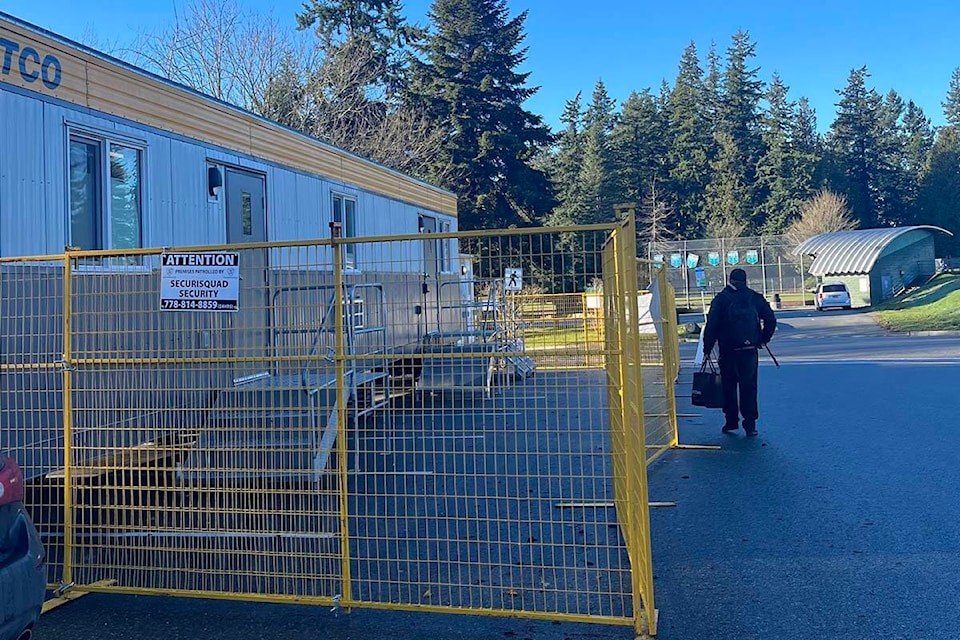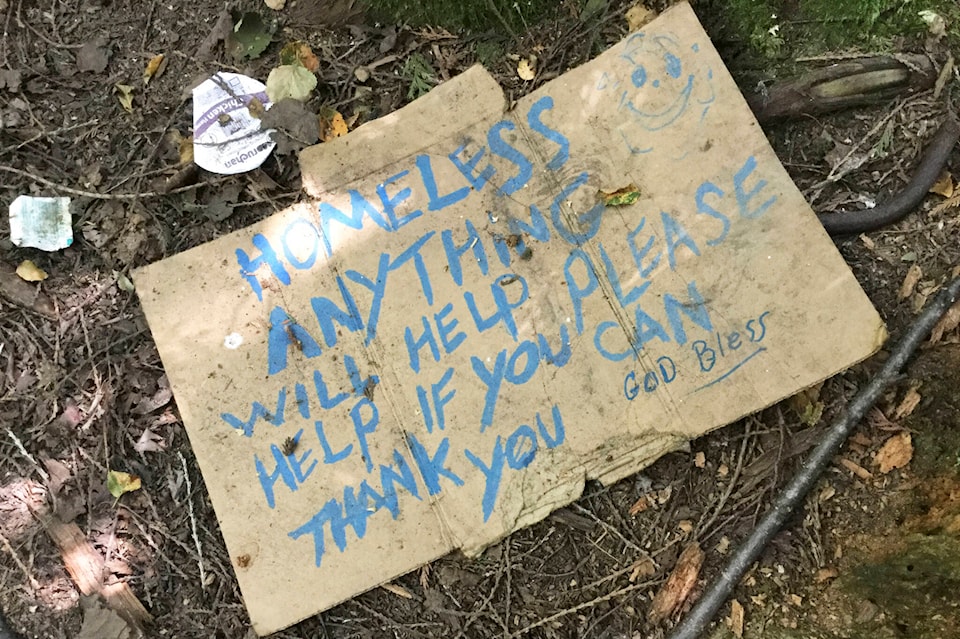As the doors to White Rock’s daytime warming centre have opened for another winter season, a different type of chill can be felt in the trailer, one the four walls can not as easily warm.
While familiar faces and some new ones are welcomed inside, everyone there can not help but notice the individuals who didn’t return.
Hopes were high that those people were seeking housing, and that could explain the reason for their absence, but the reality that staff and community were faced with was much more devastating.
“We lost quite a few folks,” Upkar Singh Tatlay, operator of the shelter, came to learn.
“Some of the folks who were born and raised in White Rock, we were thinking, well, where are they? Come to find out a couple of them had passed.”
One of those individuals was Randy, survived by his brother who also uses homelessness services in the area, but now does so alone.
The brothers had other relatives, just not in B.C.
How, exactly Randy’s life ended is not known and while he was chatty and friendly with most, Tatlay shared that the senior had his fair share of challenges.
“Randy had a lot going on. He had injuries, a really bad head injury, he had lost a lot of weight, he had taken a pretty good beating before, too. He was elderly, well into his 60s.”
The White Rock man was seeking treatment last year at the shelter from the health care staff who volunteered their time to support individuals.
Getting Randy checked out for his physical injuries and efforts to bring his weight back up to a healthier point were showing results, Tatlay said, but there was likely a drop in support after the shelter closed in March.
Tragically, Randy is not the only one who died since last winter.
“There was another gentleman and he had suffered severe burns last year. He had set up an encampment and one night he had fallen over into some gel-like material that he used for a fire and it spread, it was all up and down from his lower back down to his leg,” Tatlay explained.
“It had burnt him severely and he was brought to our site by police and he came here, he didn’t go to hospital. We began treating him here, the nurses were seeing him and getting him patched up and I just found out that he died.”

Royce, who has been living on the streets the last few months, is reeling after the loss of his childhood friend, who he says “froze to death” at White Rock beach not long ago. Royce did not want his friend’s name publicly shared, as his family was not aware that he was living unhoused when his life ended, he said.
“This is inhumane. It’s a safety concern, or it should be,” Royce told Peace Arch News, chatting outside the warming centre in White Rock.
These few people are not anomalies, but are part of a larger issue playing out across the province. A recent report from BC Coroners Service revealed that at least 342 people experiencing homelessness died in 2022, an increase of 28 per cent from 2021.
According to the report, the number of deaths has increased significantly in just the past few years. In a combined total for 2019 and 2020, there were at least 275 total deaths, while the combined total for 2021 and 2022 rose significantly, to at least 609 people.
“Just as it has across all demographics and in communities throughout B.C., the toxic drug supply has significantly contributed to the increased number of deaths among people who are precariously housed or experiencing homelessness,” the report reads.
Of the total deaths for 2022, 93 per cent were linked to the unregulated toxic drug supply in B.C. and 90 per cent were classified as accidental deaths.
Geographically, Vancouver led for the area of the highest number of homeless deaths, with Surrey and Victoria following.
READ MORE: Toxic drugs blamed as B.C. homeless deaths more than double
An endless cycle
It’s a seemingly endless cycle for people experiencing homelessness in the Semiahmoo Peninsula of South Surrey and White Rock. Temporary services are introduced and people are helped, then the service period ends and most soon end up back where they started.
While the services in the area close by the season’s end, the need does not work on quite the same time-frame. The city of Surrey’s website even highlights South Surrey as an area of “urgent” concern for lacking homelessness services and while the overnight shelter has a larger capacity this year around — up 20 spots from last year, with space for 45 people — any type of supportive housing site or permanent service has not been announced for the area.
The community is definitely feeling the need, as a drop in services was undoubtedly felt from March.
“This woman came in a cab and on the outward appearance, she wouldn’t look like she’s homeless,” Tatlay said.
“She had little cans of cat food so I went ‘Oh you have a cat’ and she goes ‘No, it’s what I’ve been eating.’ I went, ‘Are you kidding me?’”
Now, the woman has gained access to food and shelter, after losing her apartment recently, but what will happen to her and others once the daytime and overnight shelters are closed at the end of winter remains unclear.
Some individuals from last season were able to access transitional housing services, but not everyone was as lucky. Tatlay said that for the individuals who have been living homeless for years, the transition requires more time compared to people who are newly homeless.
ALSO READ: ‘There are humans on the street’: Supportive housing sites sought in South Surrey
“If I went to some of these guys right now and said ‘we’re going to get you into housing’, they’d be like, ‘Is that a joke?’ They need that time for us to triage and get people back to some baseline first,” he added.
The issue is, getting to that “baseline” where individuals are physically and mentally more healthy takes long enough for some that there may not be time to then transition to housing, or there is often not enough housing options available for them, the operator explained.
“Some will make new encampments that get broken up either by police or bylaw so they move on to elsewhere. It’s a constant sort of cat-and-mouse game.”
While five supportive housing sites opened last year in Surrey and two more in 2023, all locations have been in North Surrey, while the people in the Semiahmoo Peninsula often want to stay in their community.
Even then, the Surrey locations don’t provide enough space, given that last year, Tatlay said, many people from the community ended up moving into housing in Vancouver or other areas of B.C.
- with files from Wolf Depner
